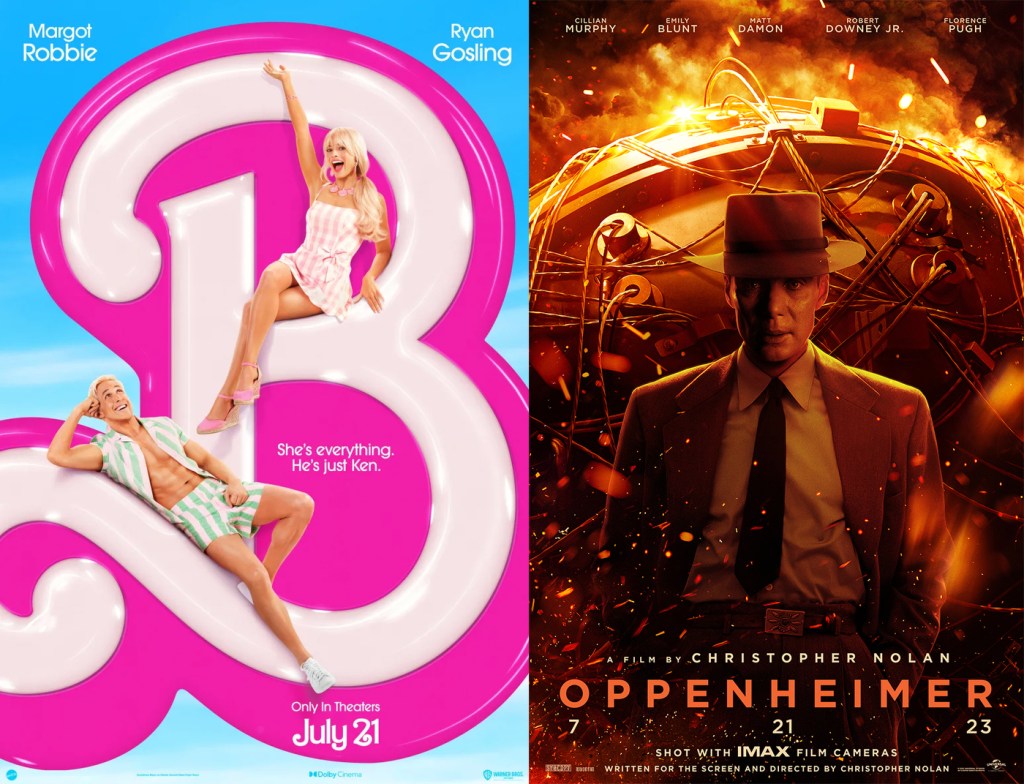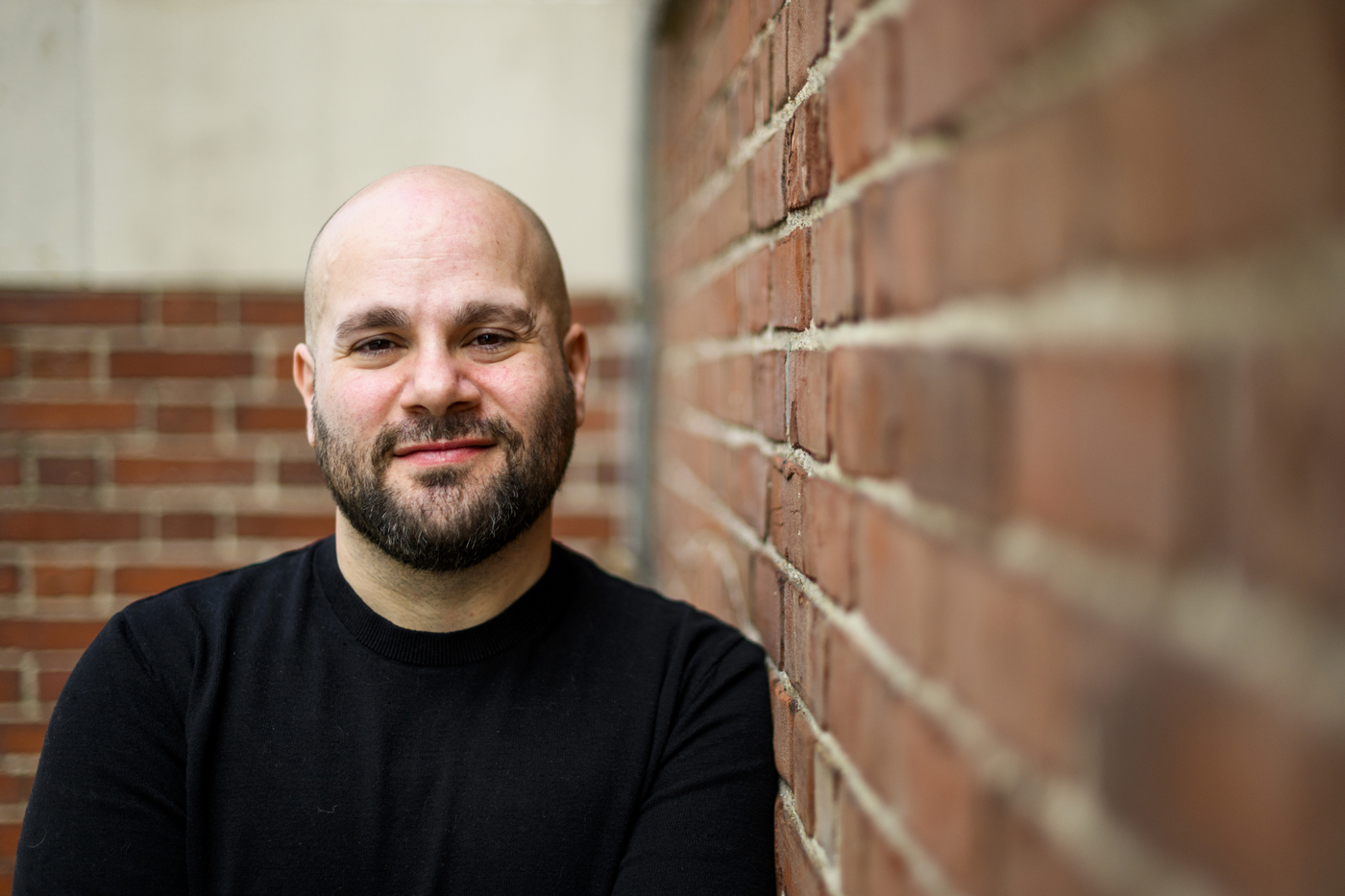Will ‘Barbenheimer’ change the movie industry or is it just an anomaly?

If you were in and around a movie theater last weekend, it might have seemed like you had gone back in time. Theaters were bustling, buttered popcorn was flowing and moviegoers were filling up seats in record time.
It’s all thanks to “Barbenheimer,” the unlikely twin release of “Barbie” and “Oppenheimer” that took theaters, the box office and the movie industry at large by storm. During its opening weekend, Greta Gerwig’s “Barbie” brought in $162 million domestically, while “Oppenheimer,” Christopher Nolan’s three-hour, half black-and-white historical drama generated $82.4 million––and their momentum has only continued during the week.
It’s a shocking reversal from the empty theaters of the pandemic and post-pandemic world. It’s also a notable shift for the industry in another important way: Both films are non-sequels and non-superhero films directed by auteurs with specific visions, not cookie-cutter franchise constraints.

At a time when the industry is taking stock of a box office boon––and ongoing writers’ and actors’ strikes––the question for Hollywood is whether “Barbenheimer” and the chord it struck with audiences is an anomaly or a sign that there is a sea change occurring in the industry.
Steve Granelli, associate professor of communication studies at Northeastern University, says it all depends on what lessons studios and the industry at large take away from this.
“There’s a good lesson and a scary lesson,” Granelli says.
“The scarier lesson is this idea of product as subject,” he continues. “There was this glut of product-based films, whether it was BlackBerry or Flaming Hot Cheetos or Air Jordans. Barbie is the most elevated form of all of that, where it’s taking this known cultural entity, but then the known cultural entity was handed over to an auteur. … The idea that ‘everybody’s had Hot Wheels, so we’re making a Hot Wheels movie,’ that’s the scary part.”
Granelli’s nightmare is not entirely unfounded; in fact, it’s already coming true. In the immediate afterglow of “Barbie,” Mattel, the toy company behind the doll, announced plans to develop films based on 14 of its properties, including Polly Pocket and Barney.
Although “Barbie” is Gerwig’s singularly creative interpretation, it’s still a known IP with a built-in audience. For studios like Warner Bros. Discovery, which is grappling with billions of dollars of debt, that kind of low-risk proposition is enticing. Granelli says the success of both “Barbie” and “Oppenheimer,” which tells a well-known story in its own way, might reinforce Hollywood’s doubling down on known quantities, not new ideas.
But the reason “Barbenheimer” continues to be such a big hit is not just because people played with Barbies as a kid or learned about the father of the atomic bomb in school. The all-encompassing marketing campaign the “Barbie” team ran did a lot of heavy lifting. The dual release of two such different movies organically and virally also encouraged people to set up their own double features, dress up and talk about which movie they saw and which they didn’t, Granelli says.
But the movies themselves also played a big role. Both films are big, creative swings from directors who are taking creative risks with IP. Granelli says there is a lesson there for studios, if they want to hear it.
“The positive lesson is the built-in audience and being able to play with people’s expectations and experiences with that, but the downfall is that there’s only so much of that we can do if we’re not going to have people celebrate original ideas,” Granelli says.
Even if both films aren’t original stories, they are outside the sequel-driven, superhero-focused blockbuster focus that has defined the industry for the last decade and more. And they came at a time when those films are waning in popularity and box office performance.
“I think this happened at the right time, in the right summer, after the right string of movies bombing,” Granelli says. “I think we’re in a real transition phase, and we need a ‘Barbie’ and an ‘Oppenheimer’ and a number of other films that are coming up this year to do well to show that there are initial stories that are still resonating with audiences.”
Whether “Barbenheimer” indicates a broader interest in non-IP driven stories is yet to be seen. Granelli has his eye on films like Martin Scorsese’s upcoming “Killers of the Flower Moon,” a historical epic, or even a film like “The Bikeriders,” an ensemble-driven story about a fledgling motorcycle club starring Tom Hardy and recent Oscar nominee Austin Butler.
“It’s one of these [films] where it’s an original idea, it’s an ensemble cast, it’s a film that’s going to look really good in the theater,” Granelli says. “I’m like, ‘Let’s see how that does.’”
“Barbenheimer” was an anomaly in so many ways––from the studio and organic marketing around it to the time it hit the industry and the filmmakers at the center of it. Granelli is hesitant to call it a “singular moment,” but he’s adamant it is an important one for the industry, in more ways than one.
“There were a lot of intervening factors that made this a really exciting weekend for the industry,” Granelli says. “Also, during such an exciting time for the industry, there’s the actors’ strike and the writers’ strike, so this is probably the worst time for this to have happened for the studios because now it just draws more attention to the actors and writers, who are like, ‘We’re the reason people went [to the theater].’”
Cody Mello-Klein is a Northeastern Global News reporter. Email him at c.mello-klein@northeastern.edu. Follow him on Twitter @Proelectioneer.





